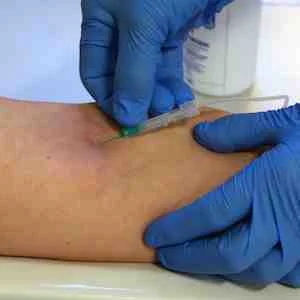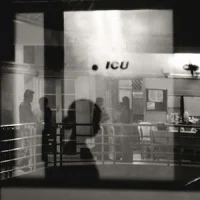The negative impact of blood sampling in critical care patients is well known, and more recently the importance of blood conservation strategies to prevent iatrogenic anaemia has been validated. Resulting over-prescription of packed red blood cell (PRBC) transfusions is a significant cost to the healthcare system. Although evidence exists on blood conservation strategies, international guidelines have not been developed. A recently published paper from Australia audited blood sampling practices in critical care units in Brisbane, and the findings suggest that more could be done to promote blood conservation strategies in ICUs. More blood was taken than needed, and savings could be made by using smaller phlebotomy tubes and by developing international guidelines, the authors suggest.
The researchers set out to describe practice and local guidelines in adult, paediatric and neonatal Australian intensive care units (ICUs) regarding blood sampling and conservation strategies in three Queensland ICUs: the adult ICU at the Royal Brisbane and Women’s Hospital (RBWH), Brisbane, Australia; the paediatric ICU at the Royal Children’s Hospital (RCH), Brisbane, Australia; and the neonatal ICU at the RBWH, Australia.
They undertook a study over one week in July 2013, collecting information on the diagnostic blood samples obtained, including amount, frequency and type of blood sampling as well as the demographic and acuity data of patients. Institutional blood conservation practice and guidelines were compared against international evidence-based recommendations. They also estimated the direct pathology costs.
940 blood sampling episodes from 96 patients were studied. Individually, 655 samples were examined from 50 patients in the adult ICU, 145 samples from 16 patients in the paediatric ICU and 140 samples from 30 patients in the neonatal ICU. The majority of the participants in each ICU were mechanically ventilated and admitted to the ICU for at least 50 h during the study period. Most of the blood sampling in adult and paediatric units was for arterial blood gas - 80% adult and 80% of paediatric. This accounted for 47% of neonatal samples taken (p < 0.001). However, there was 492/945 (52.1%) missing data on the reason for blood sampling in 493/945 (52.1%) of cases. Of data received, the main reason for blood sampling across ICU settings was routine or medical doctor requested (adults 93%; paediatrics 99%; neonates 90%, p < 0.024). ABGs were more often nurse-initiated in the adult (49%) and paediatric ICUs (53%), as opposed to the neonatal ICU which were most commonly due to medical staff request (95.4%).
The total volume of samples per day (median [IQR]) was highest in adults (adults 22.3 mL [16.8]; paediatrics 5.0 mL [1.0]; neonates 0.16 mL [0.4]). Therefore blood sampling costs per day were highest in the adult ICU.
The researchers found that there was little information about blood conservation strategies in the local clinical practice guidelines, with the adult and neonatal sites including none of the international evidence-based recommendations. While strategies were being used, the authors note that they were not necessary directed at preventing iatrogenic anaemia or a reduction in unwarranted blood sampling.
The authors conclude that the significant variation in sampling practice and blood conservation strategies that they found has implications not only for anaemia but infection control and healthcare costs. They write: “If the patients’ clinical characteristics are not the cause of increased blood sampling frequency and volume, the underlying decision-making by clinicians is unclear. It is plausible that blood sampling practice remains a matter of tradition, clinician preference or fear,in comparison to a reflection of the best available evidence. Awareness of maintaining fluid balance and blood volume, is likely more prominent in the minds of neonatal ICU practitioners, with the risk of iatrogenic anaemia under-estimated in older children or adult patients.”
The lower daily blood sampling volume in the paediatric and neonatal ICUs was partially explained by the routine use of small-volume phlebotomy tubes. The authors note that in Queensland the actual sample required and the pathology costs for processing of small or standard-volume phlebotomy tubes is the same and ask why these are not rolled out for all patient testing.
The authors note that savings of more than A$26million and 6000L less blood waste annually due to testing and sampling could be realised if adult ICU pathology costs and volumes were reduced to the described neonatal estimates.
The authors conclude by recommending further interventions and research to promote blood conservation strategies in ICUs, and note that “little international effort has been made at translating the evidence available to support the reduction of iatrogenic anaemia to the critical care bedside."
The researchers set out to describe practice and local guidelines in adult, paediatric and neonatal Australian intensive care units (ICUs) regarding blood sampling and conservation strategies in three Queensland ICUs: the adult ICU at the Royal Brisbane and Women’s Hospital (RBWH), Brisbane, Australia; the paediatric ICU at the Royal Children’s Hospital (RCH), Brisbane, Australia; and the neonatal ICU at the RBWH, Australia.
They undertook a study over one week in July 2013, collecting information on the diagnostic blood samples obtained, including amount, frequency and type of blood sampling as well as the demographic and acuity data of patients. Institutional blood conservation practice and guidelines were compared against international evidence-based recommendations. They also estimated the direct pathology costs.
940 blood sampling episodes from 96 patients were studied. Individually, 655 samples were examined from 50 patients in the adult ICU, 145 samples from 16 patients in the paediatric ICU and 140 samples from 30 patients in the neonatal ICU. The majority of the participants in each ICU were mechanically ventilated and admitted to the ICU for at least 50 h during the study period. Most of the blood sampling in adult and paediatric units was for arterial blood gas - 80% adult and 80% of paediatric. This accounted for 47% of neonatal samples taken (p < 0.001). However, there was 492/945 (52.1%) missing data on the reason for blood sampling in 493/945 (52.1%) of cases. Of data received, the main reason for blood sampling across ICU settings was routine or medical doctor requested (adults 93%; paediatrics 99%; neonates 90%, p < 0.024). ABGs were more often nurse-initiated in the adult (49%) and paediatric ICUs (53%), as opposed to the neonatal ICU which were most commonly due to medical staff request (95.4%).
The total volume of samples per day (median [IQR]) was highest in adults (adults 22.3 mL [16.8]; paediatrics 5.0 mL [1.0]; neonates 0.16 mL [0.4]). Therefore blood sampling costs per day were highest in the adult ICU.
The researchers found that there was little information about blood conservation strategies in the local clinical practice guidelines, with the adult and neonatal sites including none of the international evidence-based recommendations. While strategies were being used, the authors note that they were not necessary directed at preventing iatrogenic anaemia or a reduction in unwarranted blood sampling.
The authors conclude that the significant variation in sampling practice and blood conservation strategies that they found has implications not only for anaemia but infection control and healthcare costs. They write: “If the patients’ clinical characteristics are not the cause of increased blood sampling frequency and volume, the underlying decision-making by clinicians is unclear. It is plausible that blood sampling practice remains a matter of tradition, clinician preference or fear,in comparison to a reflection of the best available evidence. Awareness of maintaining fluid balance and blood volume, is likely more prominent in the minds of neonatal ICU practitioners, with the risk of iatrogenic anaemia under-estimated in older children or adult patients.”
The lower daily blood sampling volume in the paediatric and neonatal ICUs was partially explained by the routine use of small-volume phlebotomy tubes. The authors note that in Queensland the actual sample required and the pathology costs for processing of small or standard-volume phlebotomy tubes is the same and ask why these are not rolled out for all patient testing.
The authors note that savings of more than A$26million and 6000L less blood waste annually due to testing and sampling could be realised if adult ICU pathology costs and volumes were reduced to the described neonatal estimates.
The authors conclude by recommending further interventions and research to promote blood conservation strategies in ICUs, and note that “little international effort has been made at translating the evidence available to support the reduction of iatrogenic anaemia to the critical care bedside."
References:
Ullman AJ, Keogh S, Coyer F et al. (2015) 'True Blood' The Critical Care Story: An audit of blood sampling practice across three adult, paediatric and neonatal intensive care settings. Aust Crit Care, Jun 30. pii: S1036-7314(15)00075-2. doi: 10.1016/j.aucc.2015.06.002. [Epub ahead of print]
Latest Articles
Blood sampling, ICUs, Australia, Clinical practice
Study of blood sampling practices in ICUs in Brisbane










